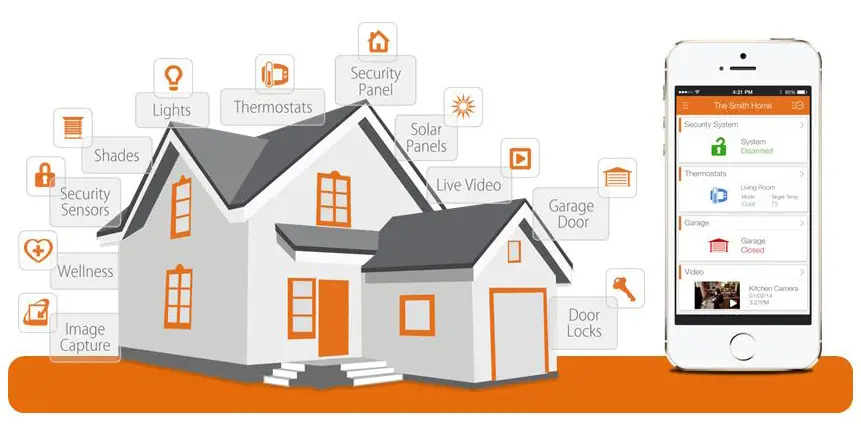Living in the Future: The Evolution and Impact of Smart Homes
Introduction:
In the not-so-distant past, the idea of a home that could think for itself, anticipate your needs, and seamlessly integrate technology into every aspect of daily life seemed like the stuff of science fiction. Fast forward to today, and smart homes have become an integral part of our reality, reshaping the way we live and interact with our living spaces. In this article, we will delve into the evolution of smart homes, exploring the technologies that have propelled their growth, the current state of smart home ecosystems, and the potential future developments that may redefine the concept of home even further.
I. The Birth of Smart Homes: Early Innovations
The journey of smart homes began with the advent of basic home automation technologies. In the late 20th century, early adopters experimented with systems that allowed remote control of lighting, heating, and security systems. However, these systems were often disjointed and lacked the seamless integration that characterizes modern smart homes.
II. The Rise of Connectivity: Internet of Things (IoT)
The real breakthrough for smart homes came with the widespread adoption of the Internet of Things (IoT). The ability to connect everyday devices to the internet paved the way for a new era in home automation. Suddenly, thermostats, refrigerators, door locks, and even light bulbs could communicate with each other, offering homeowners unprecedented control and convenience. The concept of a fully connected home ecosystem had arrived.
III. Core Components of a Smart Home:
a. Smart Lighting Systems:
- Integration with voice assistants
- Automated schedules and adaptive lighting
- Energy-efficient LED technology

b. Smart Thermostats:
- Learning algorithms for temperature optimization
- Remote control via smartphone apps
- Integration with other smart devices for energy efficiency
c. Home Security Systems:
- Smart cameras with AI-based recognition
- Doorbell cameras and facial recognition
- Integration with smart locks and alarms
d. Voice-Activated Assistants:
- Amazon Alexa, Google Assistant, Apple Siri
- Voice control for various devices
- Integration with other smart home components
e. Smart Appliances:
- Refrigerators with inventory tracking
- Washing machines with app-based controls
- Energy-efficient and connected kitchen appliances
f. Automated Window Treatments:
- Motorized blinds and curtains
- Integration with lighting and temperature control
- Remote control and scheduling options

IV. Enhancing Comfort and Efficiency: The Impact of Smart Homes on Daily Life
One of the primary goals of smart home technology is to enhance the comfort and efficiency of daily living. With sensors and smart algorithms, homes can adapt to the needs and preferences of their occupants. For example, a smart thermostat can learn the temperature preferences of the household and adjust settings automatically. Lighting systems can create the perfect ambiance for different activities, from movie nights to dinner parties.
The integration of voice-activated assistants has further streamlined the user experience. Homeowners can now control various aspects of their homes using simple voice commands, whether it’s adjusting the thermostat, dimming the lights, or checking who is at the front door. This level of convenience has not only transformed the way we interact with our homes but has also paved the way for increased accessibility, making it easier for individuals with mobility challenges to manage their living spaces.
V. Challenges and Concerns in the Era of Smart Homes:
a. Security and Privacy:
- Vulnerabilities in IoT devices
- Privacy concerns with cameras and voice assistants
- The need for robust cybersecurity measures
b. Interoperability:
- Compatibility issues between different smart devices
- The importance of industry standards
- Efforts towards creating unified smart home ecosystems

c. Cost and Accessibility:
- The initial investment in smart home technology
- Affordability and accessibility for a broader demographic
- The role of government incentives and subsidies
VI. The Future of Smart Homes: Trends and Innovations
As technology continues to evolve, so does the landscape of smart homes. Several trends and innovations are shaping the future of connected living spaces:
a. Artificial Intelligence (AI) Integration:
- AI-driven home automation
- Predictive analytics for energy efficiency
- Personalized user experiences
b. Health and Wellness Monitoring:
- Smart home devices for health tracking
- Integration with wearables and medical devices
- Early detection of health issues through home sensors
c. Augmented Reality (AR) and Virtual Reality (VR):
- AR for interactive home design and decor
- VR simulations for testing and experiencing smart home setups
- Virtual walkthroughs for remote home management
d. Sustainable and Eco-Friendly Technologies:
- Integration of renewable energy sources
- Smart water and energy management
- Eco-friendly materials and construction techniques
e. 5G Connectivity:
- Enhanced speed and connectivity
- Support for a massive number of connected devices
- Low latency for real-time interactions
Certainly! Let’s explore the advantages and disadvantages of smart homes:
Advantages of Smart Homes:
- Convenience and Automation:
- Advantage: Smart homes offer unparalleled convenience by automating routine tasks. From adjusting thermostats to turning off lights, automation simplifies daily activities, saving time and effort.
- Energy Efficiency:
- Advantage: Smart homes often come equipped with energy-efficient devices and systems. Smart thermostats, lighting controls, and appliances help reduce energy consumption, leading to cost savings and environmental benefits.
- Enhanced Security:
- Advantage: Smart security systems, including cameras, doorbell cameras, and smart locks, provide homeowners with real-time monitoring and control. Alerts and notifications offer an added layer of security, deterring potential threats.
- Remote Monitoring and Control:
- Advantage: Homeowners can monitor and control various aspects of their homes remotely using smartphone apps. This is particularly useful for adjusting settings, checking security, or receiving alerts when away from home.
- Customization and Personalization:
- Advantage: Smart homes allow for a high degree of customization. Users can tailor settings based on personal preferences, creating a living environment that suits their lifestyle and comfort.
- Integration and Interoperability:
- Advantage: Many smart home devices are designed to work seamlessly together, fostering interoperability. This integration ensures a unified experience and reduces the likelihood of compatibility issues.
- Increased Accessibility:

- Advantage: Smart home technologies enhance accessibility for individuals with mobility challenges or disabilities. Voice-activated assistants and automated features make it easier for everyone to manage their living spaces.
- Health and Safety Benefits:
- Advantage: Smart homes can incorporate health-monitoring devices and sensors. These innovations enable early detection of potential health issues and contribute to a safer living environment.
Disadvantages of Smart Homes:
- High Initial Costs:
- Disadvantage: The upfront costs of purchasing and installing smart home devices can be relatively high. This initial investment may pose a barrier to entry for some homeowners.
- Complexity and Technical Issues:
- Disadvantage: Smart home systems can be complex, leading to potential technical issues. Connectivity problems, software glitches, or device malfunctions may require troubleshooting expertise, which could be challenging for some users.
- Privacy Concerns:
- Disadvantage: The use of cameras, sensors, and voice-activated devices raises privacy concerns. Homeowners must be mindful of data collection practices and ensure robust cybersecurity measures to prevent unauthorized access.
- Dependency on Internet Connectivity:
- Disadvantage: Many smart home devices rely on a stable internet connection. In the event of an outage or disruption, the functionality of these devices may be compromised, affecting the overall user experience.
- Compatibility Issues:
- Disadvantage: With a wide array of smart home devices from different manufacturers, compatibility issues may arise. Ensuring that devices work seamlessly together requires careful consideration and research.
- Potential for Hacking and Cybersecurity Threats:
- Disadvantage: Smart homes are susceptible to hacking and cybersecurity threats. Weak passwords or vulnerabilities in device software could lead to unauthorized access, compromising the security of the home.
- Limited Standardization:
- Disadvantage: The lack of standardized protocols in the smart home industry can lead to fragmentation. This may result in devices that do not communicate effectively or require separate applications for control.
- Technological Obsolescence:
- Disadvantage: Rapid advancements in technology can render smart home devices obsolete relatively quickly. Keeping up with the latest technologies may require frequent upgrades, adding to the overall cost.
In conclusion, while smart homes offer numerous advantages in terms of convenience, energy efficiency, and security, users must be aware of potential disadvantages such as high costs, privacy concerns, and technical challenges. A thoughtful approach to implementation, considering individual needs and addressing potential drawbacks, can help homeowners make the most of this transformative technology.
VII. Conclusion:
The journey through the evolution of smart homes is nothing short of remarkable. From rudimentary automation to the interconnected ecosystems we now inhabit, our homes have become living testaments to the possibilities of technological advancement. As we conclude this exploration, it’s evident that the trajectory of smart homes is intricately tied to the relentless pace of innovation.
The promise of a smarter, more efficient, and personalized living space is tantalizing. However, as we revel in the conveniences brought by smart home technologies, it’s imperative to acknowledge and address the challenges that accompany this revolution. Security and privacy must remain at the forefront of development, with industry-wide standards and robust cybersecurity measures ensuring that our homes remain sanctuaries protected from digital threats.
Interoperability is the key to unlocking the full potential of smart homes. Efforts to create unified ecosystems, where devices seamlessly communicate and collaborate, will not only enhance user experience but also foster a more sustainable and scalable future for home automation.
As we peer into the future, it’s evident that the next frontier of smart homes will be shaped by artificial intelligence, health and wellness monitoring, augmented reality, sustainable technologies, and the transformative power of 5G connectivity. These trends will not merely augment our homes but redefine the very essence of what it means to dwell in an intelligent abode.
The democratization of smart home technology is a critical consideration. Striking a balance between innovation and affordability ensures that the benefits of this technological wave reach a broad spectrum of society. Government incentives, industry collaboration, and ongoing research will play pivotal roles in making smart homes an inclusive reality.
In this ever-evolving landscape, we find ourselves standing at the crossroads of opportunity and responsibility. The smart homes of tomorrow hold the promise of enhancing our lives in unprecedented ways. As we navigate this intelligent future, let us do so with a collective commitment to crafting homes that are not just smart but compassionate, secure, and accessible to all. Our homes, after all, are not just structures; they are the canvases upon which our lives unfold, and in making them smart, we have the power to shape a future that is both extraordinary and humane.



